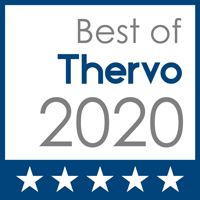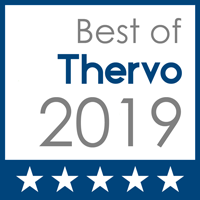Craniosacral Therapy
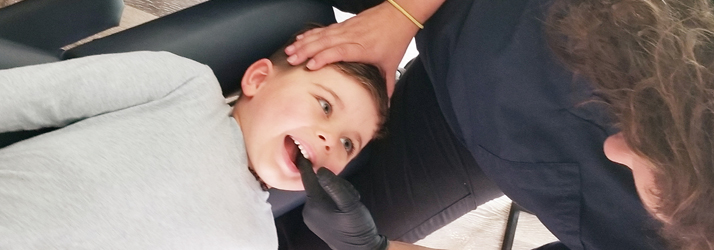
What is CranioSacral Therapy?
Craniosacral Therapy is an alternative treatment typically used by osteopaths & specialized chiropractors like Dr. Heather Valinsky of Nurture Family Chiropractic in our Simi Valley or Los Angeles locations.
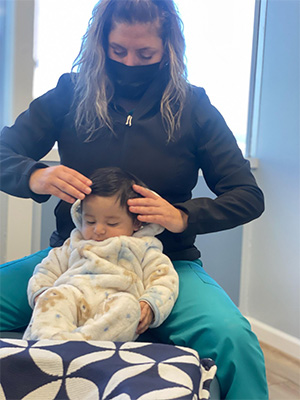
CranioSacral Therapy (CST) is a gentle, hands-on approach that releases tensions deep in the body to relieve pain and dysfunction and improve whole-body health and performance.
Using a soft touch which is generally no greater than 5 grams - about the weight of a nickel - practitioners release restrictions in the soft tissues that surround the central nervous system. CST is increasingly used as a preventive health measure for its ability to bolster resistance to disease, and it's effective for a wide range of medical problems associated with pain and dysfunction.
It uses gentle and precise touch to manipulate the joints in the cranium or skull, parts of the pelvis, and the spine to treat disease.
Practitioners of cranial osteopathy like Dr. Heather Valinsky, use their hands to gently free up restrictions in the movement of cranial bones and associated soft tissues and to stimulate the flow of the cerebrospinal fluid, which bathes all the surfaces of the brain and the spinal cord. Practitioners believe that distortions in the natural rhythms of the central nervous system may result from trauma of all types including birth trauma, childhood injuries, automobile accidents, and even psychological trauma.
Craniosacral therapy (CST) was developed in the 1970s by John Upledger, a doctor of osteopathy, as a form of cranial osteopathy.
Craniosacral Therapy: Does it work?
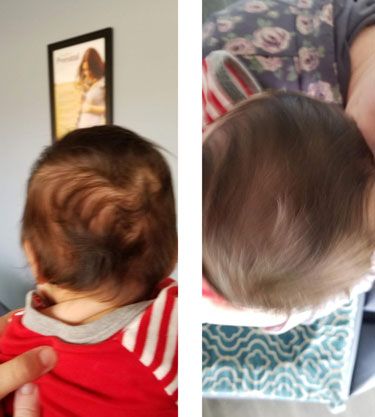 CST is a non-invasive, hands-on therapy that aims to enhance the body's own healing capabilities.
CST is a non-invasive, hands-on therapy that aims to enhance the body's own healing capabilities.
This light touch is said to affect the pressure and circulation of cerebrospinal fluid, which is the fluid around the brain and spinal cord. This process is thought to relieve pain and dysfunction.
Practitioners claim that CST can be carried out as a standalone treatment or used in conjunction with medical or other alternative therapies
The following studies indicate benefits of CST for some conditions:
- A 2010 study examined the effects of CST on people with fibromyalgia. A total of 92 people with the condition received either CST or placebo therapy for 20 weeks. Results showed that those who underwent CST experienced improvements in medium-term pain.
- Another study on CST and fibromyalgia suggests the therapy may reduce anxiety and improve the quality of life in those with the condition.
- A study on the impact of acupuncture and CST on adults with asthma reported that both therapies had potential benefits when used alongside conventional asthma treatment. However, combining CST and acupuncture showed no benefit over using either therapy alone.
- According to a 2009 study, CST may improve both quality of life and the ability of people with multiple sclerosis who have lower urinary tract symptoms to empty their bladder.
CST has been used to treat a variety of conditions, both physical and psychological.
What conditions does Craniosacral Therapy address?
- Concussion and Traumatic Brain Injury
- Migraines and Headaches
- Chronic Neck and Back Pain
- Autism
- Stress and Tension-Related Disorders
- Motor-Coordination Impairments
- Infant and Childhood Disorders
- Brain and Spinal Cord Injuries
- Chronic Fatigue
- Fibromyalgia
- TMJ Syndrome
- Scoliosis
- Central Nervous System Disorders
- Learning Disabilities
- ADD/ADHD
- Post-Traumatic Stress Disorder
- Orthopedic Problems
- And Many Other Conditions
- Immune Disorder
- Dementia
Are there conditions in which CST shouldn't be used?
There are certain situations where the application of CST would not be recommended. These include conditions where a variation and/or a slight increase in intracranial pressure would cause instability. Acute aneurysm, cerebral hemorrhage or other preexisting severe bleeding disorders are examples of conditions that could be affected by small intracranial pressure changes.
How many CranioSacral Therapy sessions will I need?
Response to CST varies from individual to individual and condition to condition. Your response is uniquely your own and can't be compared to anyone else's - even those cases that may appear to be similar to your own. The number of sessions needed varies widely - from just one up to three or more a week over the course of several weeks.
Are Cranial Adjustments Painful?
Just the opposite. Many patients report that this therapy is very relaxing. You may feel light-headed or tired, but there should be no pain involved.
Is This Safe for Children?
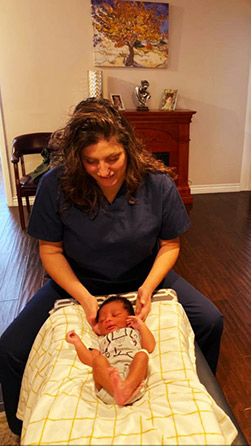
Cranial adjustment and chiropractic care are very safe for children. In fact, successful adjustments can improve their quality of life to a great extent. Children with cranial misalignment can suffer from speech and math problems, reading troubles, or even seizures and pain. A cranial adjustment can improve this, giving your child a better life.

